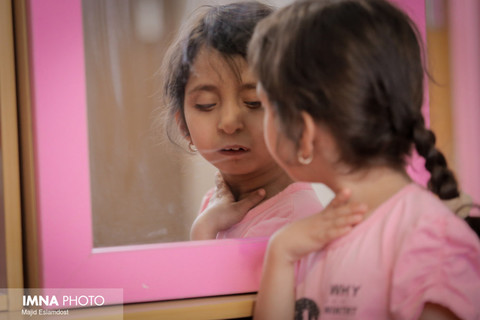Iran (IMNA) - In Isfahan, a city renowned for its rich cultural heritage, everyday activities like commuting to work, socializing with friends, or going shopping can pose significant challenges for individuals with visual impairments. However, a groundbreaking solution is on the horizon, as smart cities harness technology to empower the visually impaired and foster greater independence.
Imagine a city where the visually impaired can effortlessly recognize people, places, and even banknotes, thanks to cutting-edge technology. This is the vision of Isfahan's smart city initiative, which leverages internet-connected devices and artificial intelligence to enhance services and improve the quality of life for its residents.
Isfahan envisions a smart inclusive city
One aspect where smart cities can truly make a difference is in transportation. Isfahan's ambitious project for inclusivity aims to provide a virtual set of "eyes" for those with visual impairments. By deploying a network of beacon sensors throughout the city, visually impaired individuals can receive real-time information about their surroundings directly to their smartphones via Bluetooth. This invaluable assistance includes details such as the location of building entrances, bus stops, available seats on buses, or guidance on queuing in municipal buildings.
Drawing inspiration from successful endeavors worldwide, Isfahan looks to Dubai's pilot scheme as a model for their own advancements. In Dubai, an iPhone app was developed to convert written information in metro stations into audio instructions. This innovation proved instrumental in guiding users from the entrance to the ticket machine, gates, platforms, and carriages.
However, the benefits of smart cities extend beyond transportation. Isfahan envisions improved accessibility throughout public spaces. A crucial step towards achieving this goal is by enhancing smartphone connectivity. By equipping buildings with 5G-enabled small cells, instead of relying solely on traditional signal masts, Isfahan ensures seamless connectivity for its residents, enabling them to navigate public spaces with ease.
The transformation of Isfahan into a smart city holds immense potential for the visually impaired community. Through the integration of technology, this initiative promises to break down barriers and empower individuals to lead more independent and fulfilling lives. As Isfahan paves the way for smart cities in Iran, it sets an inspiring example for other cities around the world to follow suit in creating inclusive and accessible urban environments for all.

In a groundbreaking move, Iran is taking steps to transform its cities into advanced technological hubs. These smart cities are set to revolutionize how people live, communicate, and shop, with a particular focus on enhancing the experiences of visually impaired individuals.
One of the key advancements in these smart cities is the integration of public technology. Information points equipped with tactile maps and audio systems will provide automated guidance, offering detailed descriptions of the surrounding locations. By incorporating cameras that users can point at various buildings and landmarks, artificial intelligence-powered image recognition will identify and describe these objects to the user, providing an immersive and informative experience.
The influence of smart city technology extends beyond the streets and into the buildings themselves. Voice-controlled home assistants, such as Amazon Echo (Alexa) and Google Home, are already being utilized to operate locks, lights, and appliances, as well as to create shopping lists. However, the potential for home automation goes even further. Sensors will be implemented to detect changing weather conditions, automatically opening windows or closing curtains. Additionally, these sensors will aid in locating lost objects, making everyday life more convenient for residents.
While the emergence of smart cities like Dubai and Singapore has been witnessed globally, the adoption of smart city technology is still in its infancy. Mega investments will accelerate the development and implementation of smart city infrastructure, propelling Iran and Isfahan to the forefront of innovation and urban planning.
As Isfahan paves the way for smart cities, the future holds exciting possibilities for enhancing the quality of life for all residents.


Your Comment